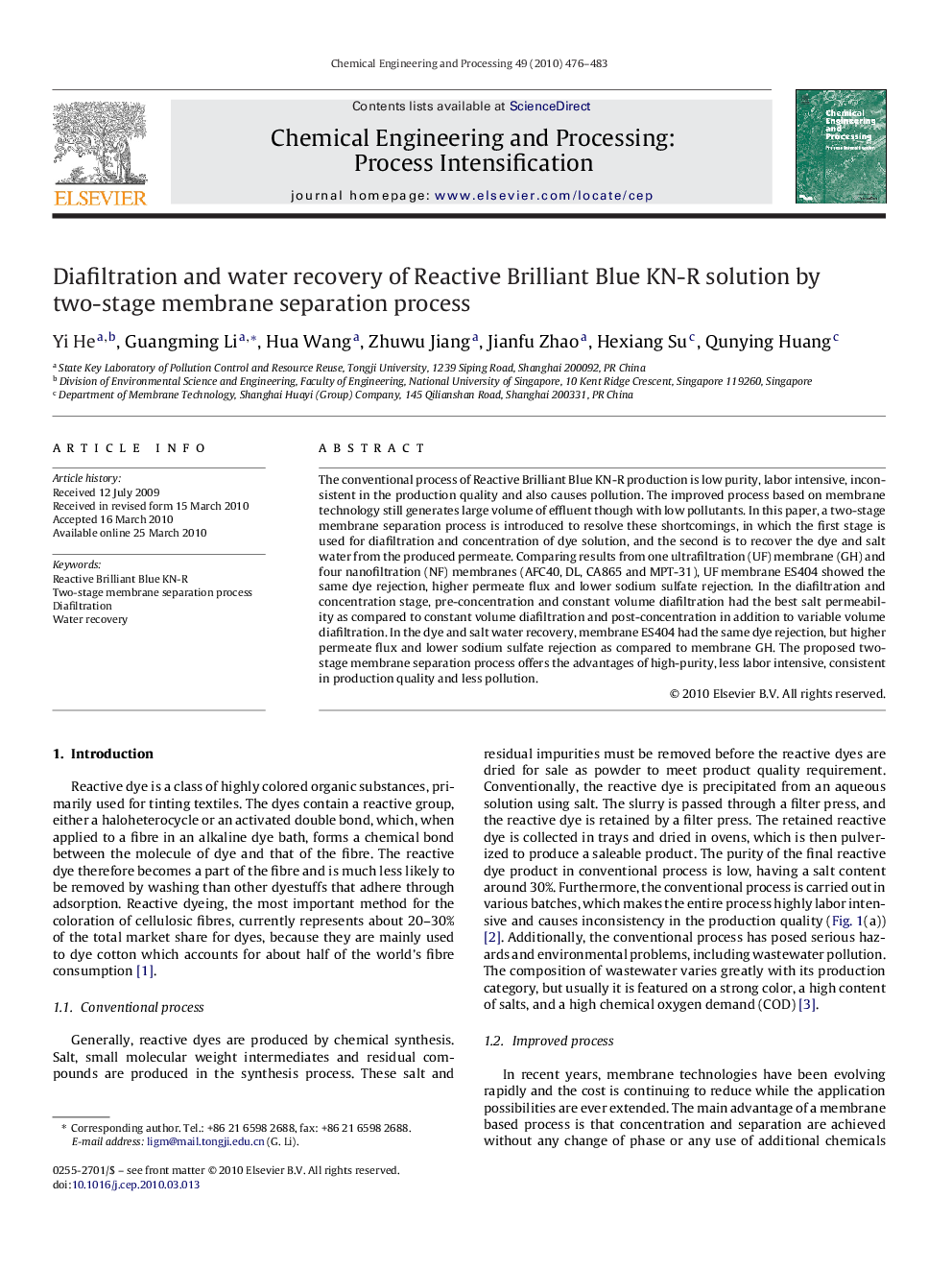| Article ID | Journal | Published Year | Pages | File Type |
|---|---|---|---|---|
| 687920 | Chemical Engineering and Processing: Process Intensification | 2010 | 8 Pages |
The conventional process of Reactive Brilliant Blue KN-R production is low purity, labor intensive, inconsistent in the production quality and also causes pollution. The improved process based on membrane technology still generates large volume of effluent though with low pollutants. In this paper, a two-stage membrane separation process is introduced to resolve these shortcomings, in which the first stage is used for diafiltration and concentration of dye solution, and the second is to recover the dye and salt water from the produced permeate. Comparing results from one ultrafiltration (UF) membrane (GH) and four nanofiltration (NF) membranes (AFC40, DL, CA865 and MPT-31), UF membrane ES404 showed the same dye rejection, higher permeate flux and lower sodium sulfate rejection. In the diafiltration and concentration stage, pre-concentration and constant volume diafiltration had the best salt permeability as compared to constant volume diafiltration and post-concentration in addition to variable volume diafiltration. In the dye and salt water recovery, membrane ES404 had the same dye rejection, but higher permeate flux and lower sodium sulfate rejection as compared to membrane GH. The proposed two-stage membrane separation process offers the advantages of high-purity, less labor intensive, consistent in production quality and less pollution.
